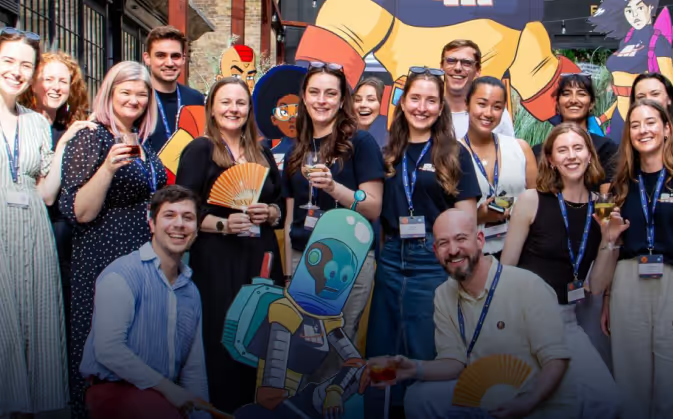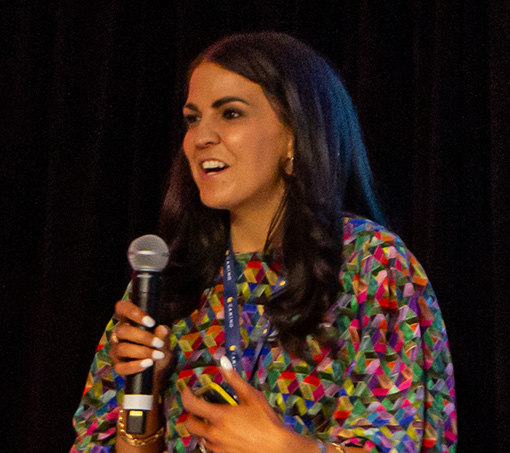The Goldilocks approach to omnichannel rare disease communications
Balancing ambition and practicality to make your strategy more than a fairytale.
“Is anyone still really talking about omnichannel?” a client asked me recently. It got me thinking about my own journey with the topic (TL;DR — the answer is yes; skip to the end of the article if you’ve no time for fairytale-inspired prose).
Friends and colleague have described me as not the most patient person (this feels unfair, I prefer ‘time-optimised’). BUT maybe that’s why I always struggled with omnichannel – it often felt so slow. Lots of time, energy and money spent building elaborate strategies before anything ever made it out into the world.
Rare disease has long been my passion: the science is cool, the stories are fascinating and there are so many chances to connect with people. But it’s also a world of small teams, tight budgets and complex communities. So omnichannel always felt a bit at odds with it, both in terms of (hypothetical) time and investment.
Then something happened! I was chatting with a long-time rare biotech client about a new engagement plan when I realised – we were basically talking about omnichannel. We just weren’t calling it that. Had I been put off all along by the terminology? Maybe. But I’ve since come to believe it can work brilliantly in rare, when it’s done with thought, balance and purpose, and appropriate appreciation of the likely return of investment.
So, for the sake of this piece, let’s call it the Goldilocks way. Not too much, not too little, but just right. (Yes, and because I like catchy names too)

This image was going to be about bears and porridge until I found out that in astronomy, the Goldilocks zone (or habitable zone) refers to the region around a star where conditions are just right to support life as we know it. It’s the range of distances where a planet can maintain liquid water on its surface — not too hot and not too cold, but “just right.” Who knew!
Too much
I’ve seen companies spend years designing their perfect omnichannel strategy, complete with complex frameworks and endless workshops. And that’s before a single piece of content has gone live.
That kind of investment might make sense in high-volume therapy areas, but in rare disease it rarely pays off. There are usually fewer specialists to reach and less time to spare. Omnichannel excellence depends on aligning investment to the true size and scope of your audience.1
In rare, that money could often be better spent on great educational content. Rare therapy areas are underserved when it comes to accessible learning materials, with impactful education one of the biggest barriers to engagemement.2
So rather than waiting for the ‘perfect’ system, start small. Focus on getting the right content out there quickly but in a slighter smarter way. The worst thing you can do is delay sharing pivotal data because you’re waiting for the most polished, personalised version of it.
Too little
On the other side, some teams avoid omnichannel altogether. They see it as too complex, too costly or too resource-heavy. I get that, but hear me out! Rare is actually made for omnichannel:
- Smaller audiences mean you can understand and map them quickly
- Complex conditions demand more ongoing, personalised communication
- Strong advocacy networks create natural connection points for joined-up engagement
Rare disease communication thrives on relevance. Matching the right content to the right need at the right time is what omnichannel is supposed to do.
And the smaller scale makes it easier to measure what really matters. In compact audiences, meaningful metrics such as referral behaviour or adoption of updated guidelines can give a clearer view of impact than volume-based data.3
Just right
So what does ‘just right’ look like in omnichannel for rare diseases? It’s omnichannel that’s tailored to the unique nature of this space, i.e. thoughtful, proportionate and built around needs. That might mean:
Starting small: Begin by segmenting by speciality rather than jumping straight into complex personas. Take spinal muscular atrophy (SMA) as an example. Neurologists, geneticists and physiotherapists all play critical roles in diagnosis and care, but their information needs are completely different. Yet many companies still use the same broad-brush messaging for everyone. In rare, you can afford to be specific. Small tweaks that reflect each speciality’s perspective make communications more meaningful and immediately useful. Because rare audiences are smaller, there’s aslo a real opportunity to make communications feel genuinely personal without adding layers of complexity. Think about how this could work within your company’s set-up and what tools you currently have in place. If you’re not sure where to start, speak to an agency partner who can help you design something that fits your needs.
Using technology intelligently: AI has changed what’s possible in rare disease communications. It can help teams map engagement journeys, automate follow-ups and generate high-quality content faster – all valuable for teams working with limited bandwidth. At Camino, we’re exploring the use of AI-driven avatars to guide HCPs to the most relevant data or resources. For small field teams, this kind of technology extends reach and consistency, keeping engagement personal even when human resources are stretched.
Making it connected: Create personalised HCP journeys that also connect the wider multidisciplinary community. Using the SMA example above, a neurologist might first engage with diagnostic data at a congress. Downloading a resource on early symptom recognition could then trigger a tailored follow-up (perhaps a short video from a multidisciplinary team or an invitation to a virtual case discussion with geneticists). Each step builds naturally from the last, creating a journey that feels relevant and purposeful. If their engagement shows growing interest in multidisciplinary care, the experience can adapt, connecting them with the broader team that makes rare care work. When done well, omnichannel in rare disease fosters collaboration and connection across the entire care pathway.
Measure what matters: In rare, metrics should go beyond opens and clicks. The real test of success is whether communication changed something meaningful. Agree on the goal upfront, then measure against it. Did referrals increase? Did time to diagnosis shorten? Did clinician confidence improve? Smaller, well-mapped audiences make it easier to measure what matters, and (especially where success can be hard to capture) qualitative feedback is just as valuable as numbers. This might mean simply using structured discussion guides to help field teams capture shifts in perception or behaviour over time. These insights can then shape the next phase of engagement, ensuring every tactic continues to evolve based on what’s making a difference.
Goldilocks by design
Too much blind focus on omnichannel and you burn through budgets and attention. Too little and you miss the chance to make a difference. Getting it just right means designing communications that balance ambition with practicality, with a focus on being relevant, connected and measurable. More than that, it’s about treating omnichannel as a living conversation rather than a static strategy that takes months to perfect. Do something, learn from it, then adapt. The best progress often comes from small experiments that evolve over time!
Perhaps the next step is to find a better name for it, one that reflects what omnichannel looks like when it’s done properly in rare disease communications. So, what should we call it? Any ideas, anyone?
More about Camino
If you’ve enjoyed this train of thought and fancy chatting more about Goldilocks, omnichannel, rare disease communications or any other new adventures then get in touch. I promise to keep it time-optimised 🙂
References
- IQVIA (2022). Medical Affairs’ Next Frontier: Unlocking Omnichannel Engagement. IQVIA White Paper (Accessed October 2025: https://www.iqvia.com/-/media/iqvia/pdfs/library/white-papers/iqvia-medical-affairs-next-frontier-unlocking-omnichannel-engagement_dec2022.pdf)
- Ipsos (2023). The Future of Healthcare: Omnichannel Research Engagements. Ipsos Healthcare Thought Leadership Report (Accessed October 2025: https://www.ipsos.com/en/future-of-healthcare-omnichannel-research-engagements)
- Indegene (2023). Optimizing Omnichannel Engagement Through Better Measurement and Strategy (Accessed October 2025: https://www.indegene.com/what-we-think/reports/optimizing-omnichannel-engagement-through-better-measurement-and-strategy)
You may also be interested in

Same model. Different humans. Different motives.
How your core work style shapes the way you use GenAI.

Omnichannel-native: A mindset shift to deliver effective healthcare communication
A brief history of omnichannel within pharma communications, from disconnected digital tactics to the omnichannel-native mindset.


.webp)




